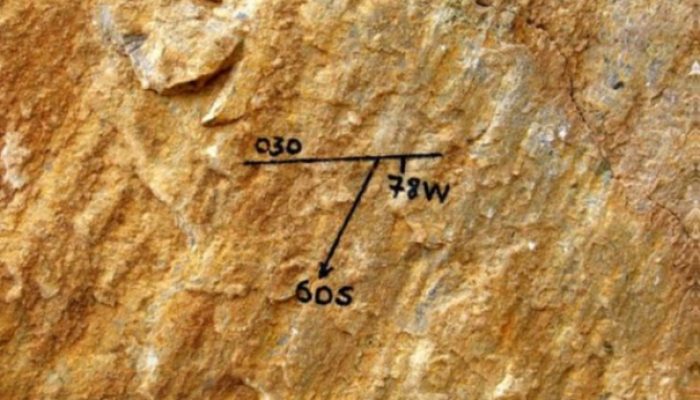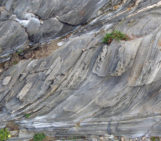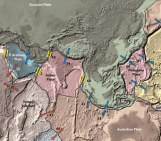
In this Tectonics and Structural Geology blog we will use different categories for our blog-posts. The first category we present to you is all about field geology: “Features from the field”. One of our bloggers, Mehmet Köküm, spends a lot of time in the field for his PhD and will share some of the features used in structural geology with us. This edition of ‘Features of the Field’ will be all about Slickenside lineations!
Paleostress Studies Reveals Deformation Mechanism
It is assumed that faults are formed as pure strike slip or dip-slip faults. However, we widely come across oblique faults. If they are formed as pure strike-slip or dip-slip faults, then something should have affected its behavior. This can be done by many things, such as a change in tectonic regime or a block rotation. Many areas in the world have experienced several different tectonic regimes in the past. Faults should have been affected by these tectonic regime changes. A normal fault could have worked as a reverse fault in the past or vice versa. In other words, if we may figure out a faults’ past behavior, we could figure out the evolution of tectonic regimes in the related area.
Within this blog I will explain how structural geologists determine the behavior of a fault in the past and present. The principle purpose of my PhD project is to determine the deformation mechanism and the relation between past and present behavior of the East Anatolian Fault (EAF) by using paleostress analysis. The EAFZ is one of the most active intracontinental transform faults in Turkey.
During a field trip as part of my PhD project, one of the goals was to find slickenside lineation on a slip surface along the East Anatolian Fault in Turkey. Slicken-lines are series of parallel lines on a fault plane and represent the direction of relative displacement between the two blocks separated by the fault. Hence, direction and sense of slip can be obtained from slickenside lineation on a fault plane. Knowing this for numerous faults helps us to understand previous and present behavior of faults.
The aim of using slickenside lineation is to calculate the paleostress tensor. Paleostress tensors provide a dynamic interpretation (in terms of stress orientation) to the kinematic (movement) analysis of brittle features. Paleostress tensor analysis enables identification of the stress history of a studied area.
There are two principal types of slicken-lines: those that form by mechanical abrasion (striations) and those formed by mineral fibrous growth (mineral fiber lineations). The former can occur either in relief or groove on a fault surface. It can be a small quartz grain or larger grain causing striations on a fault surface. The latter developed due to crystal growth fibres or other grains being crystallized during fault slip. Most are made of calcite, quartz, gypsum etc. These two types of lineations are reliable criteria for calculating the paleostress tensor and common in low-grade metamorphic rocks and sedimentary rocks.
In this work, the key issue is to find and collect as much fault slip data sets as possible. In that sense, it is important to know what kind of rocks may include slicken-lines. Striations or slicken-lines are particularly found on limestone, sandstone and claystone. Moreover, mineral fiber lineations are seen most in limestone. Therefore, limestone should be investigated in more detail to collect fault slip data.
Paleostress studies require great care, effort, and attention in the field, but its outcomes for the behavior of the faults are important, since they reveal the tectonic evolution of the area. For this reason, many structural geologist touch on palestress studies in their work in order to relate observed structures to the causative tectonic forces.





Pingback: Tectonics and Structural Geology | The Netherlands: In search of the oldest rocks of a muddy you yet